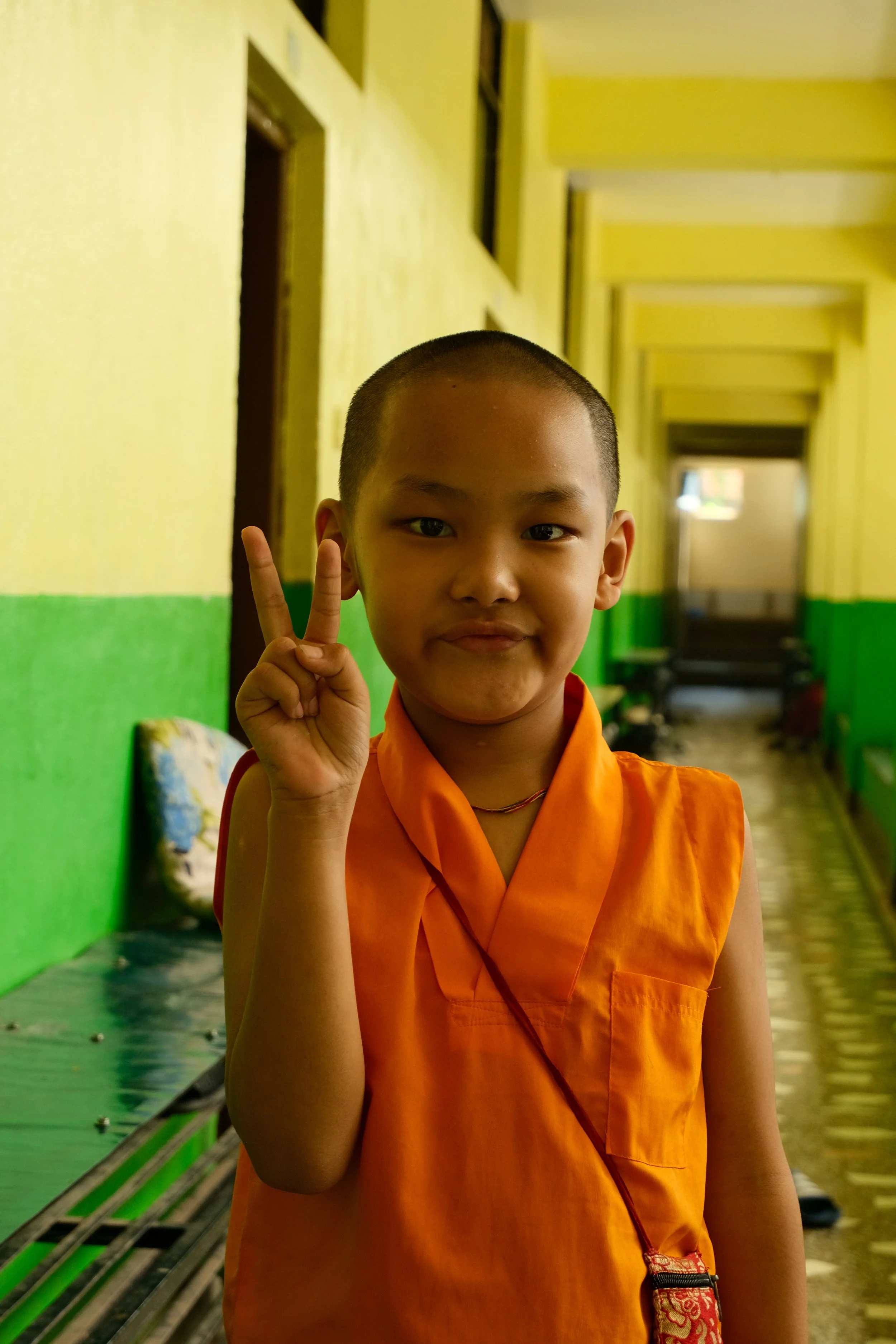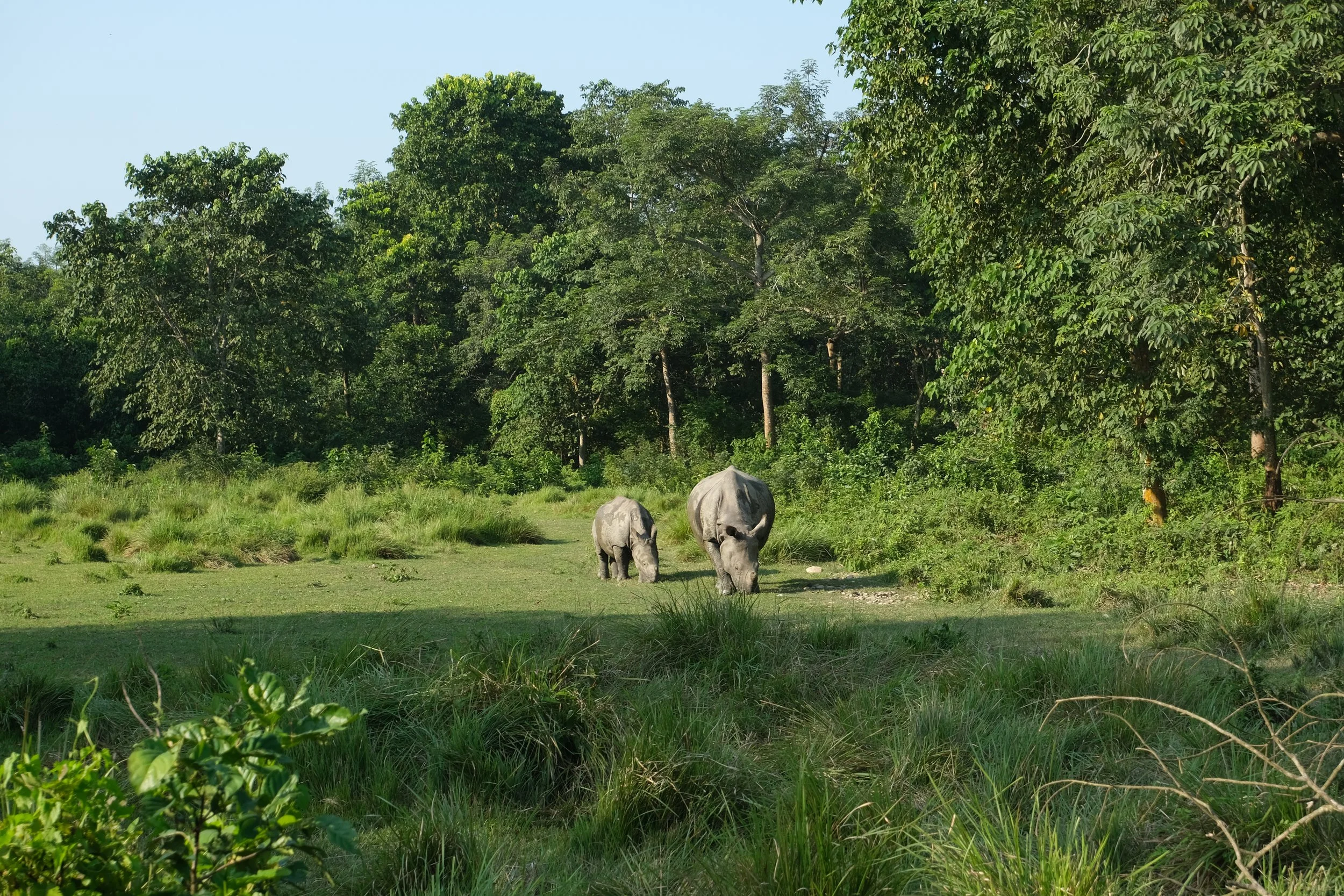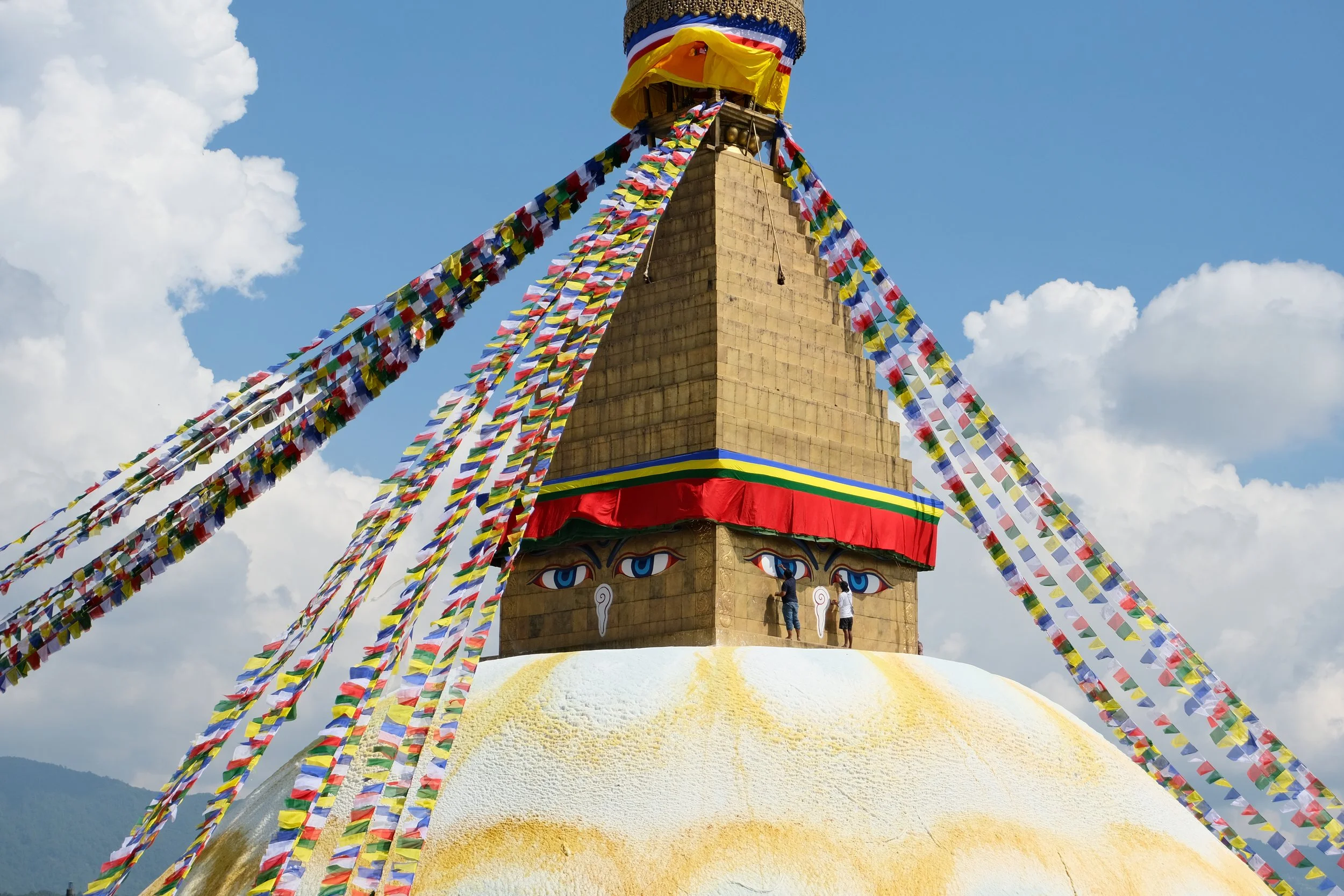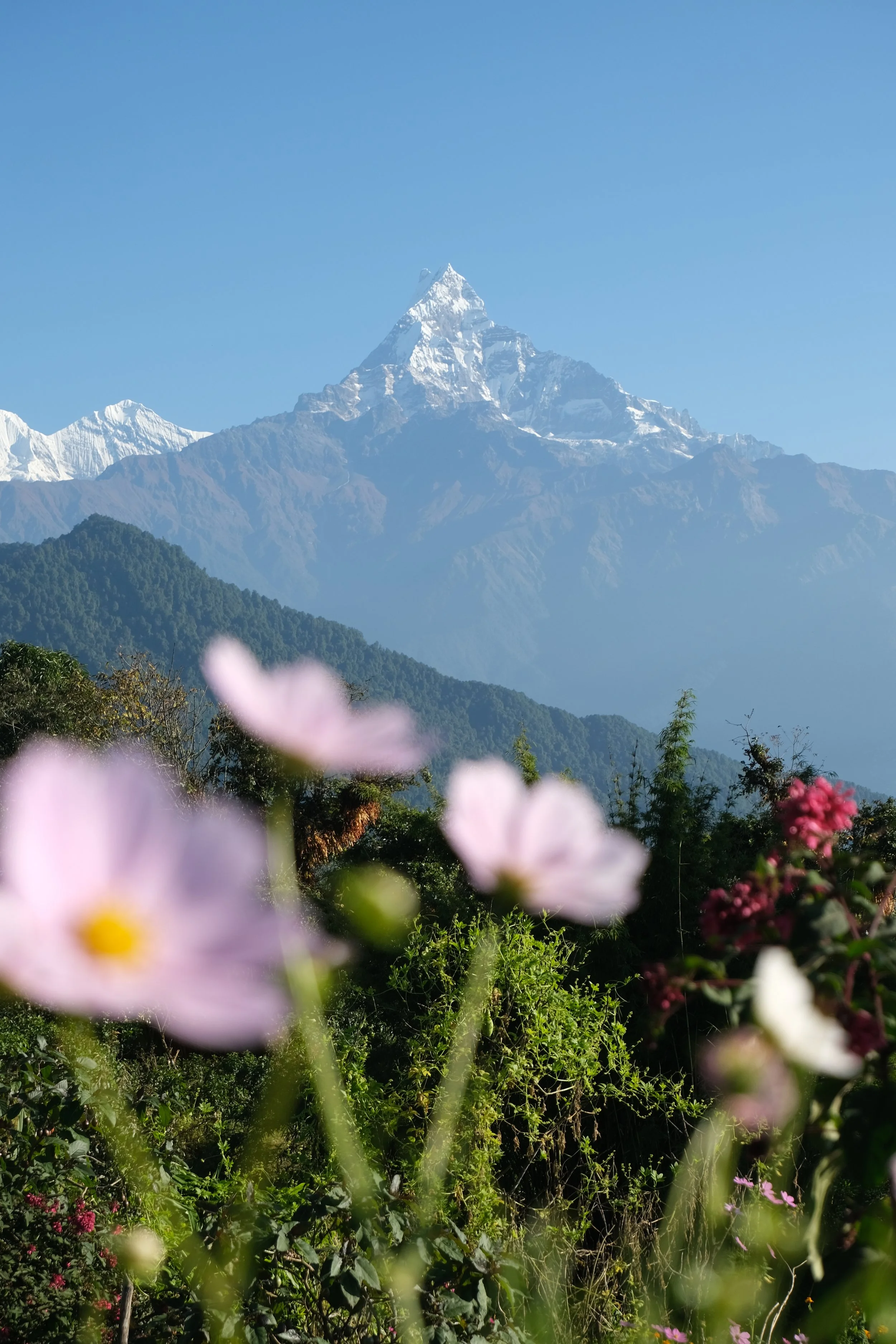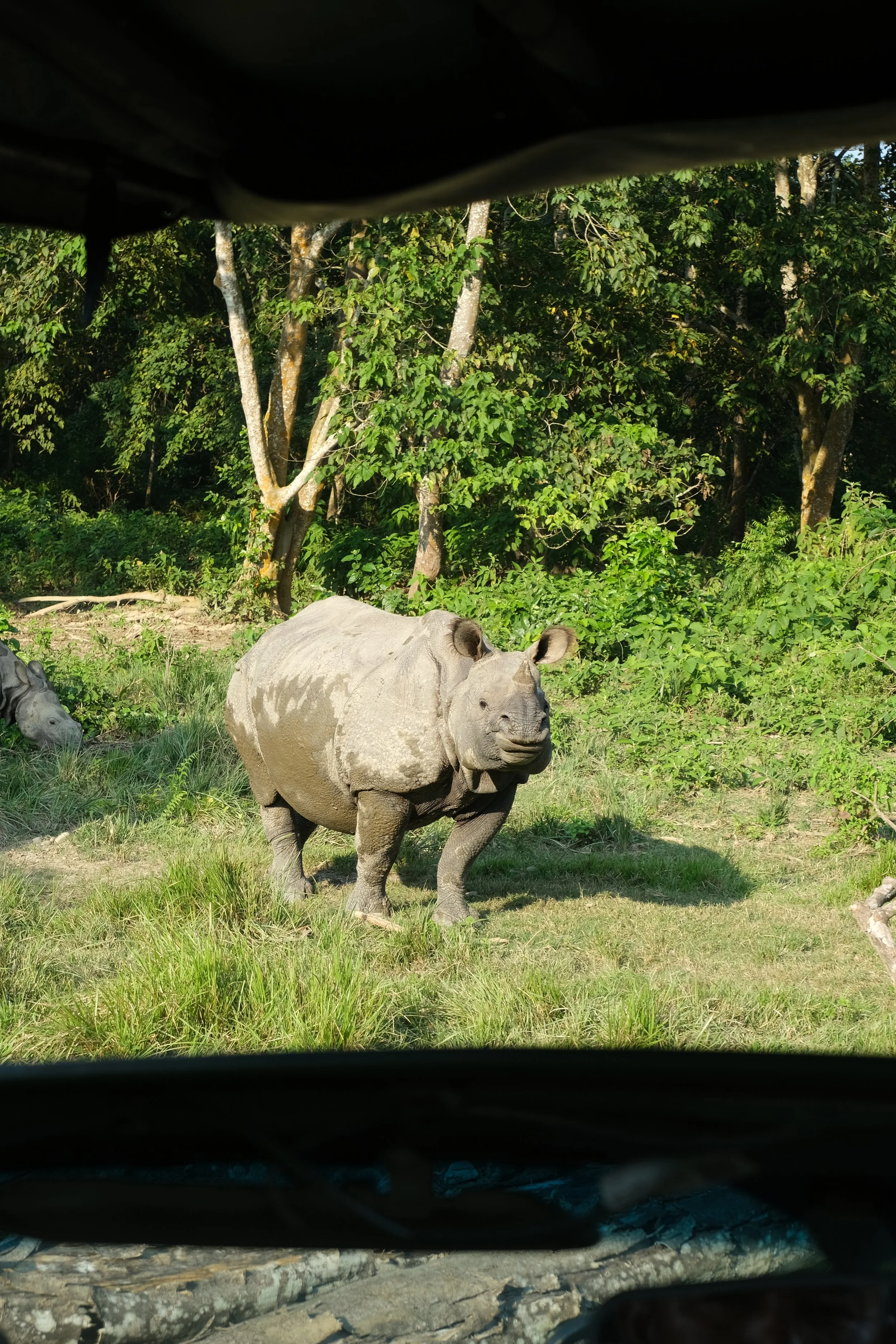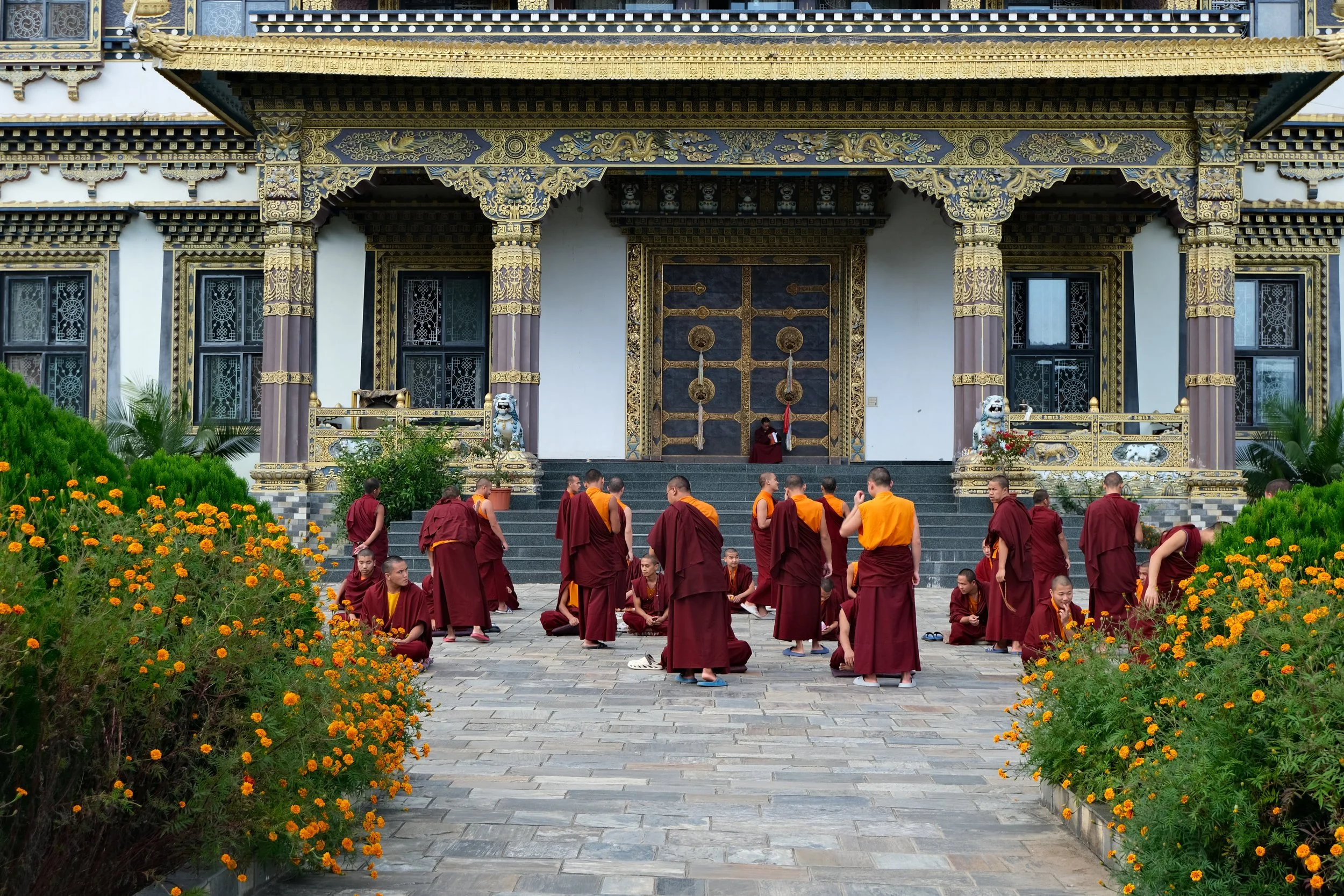Nepal Beyond Trekking: What to See, Feel, and Experience
Most travelers arrive in Nepal chasing the same dream: mountains. Names like Everest, Annapurna, and Langtang carry a kind of magic that pulls adventurers from all over the world.
But for me, I chose something different. A journey less about altitude and more about depth. A cultural experience that explored Nepal’s heart beyond the trails. (Don’t worry! I’ll be back to hike Everest Base Camp one day.)
The longer you spend here, the more you realize the country’s magic isn’t only in its summits.
It’s in the rhythm of the streets, the scent of incense curling through temple courtyards, and how a simple “namaste” always feels sincere. You don’t need hiking boots to feel close to something profound in Nepal.
Over 9 nights and 10 days, I explored everything from spiritual calm to jungle safaris with the incredible team at Mountain Routes. They helped me plan the perfect blend of cultural and local experiences, and I couldn’t recommend them more. Big statement but it is the truth — they were one of the best agencies I have ever worked with. Everything was planned flawlessly.
Here’s a look at what to see, feel, and experience in Nepal beyond trekking.
Spiritual Calm: Finding Stillness in Everyday Nepal
Spirituality in Nepal isn’t confined to monasteries or mountaintops, it’s everywhere.
At sunrise, temple bells echo through the city as locals light butter lamps before heading to work. Shrines appear in courtyards, at crossroads, even beneath old trees wrapped in colored cloth.
Start in the Kathmandu Valley, where Hindu and Buddhist traditions intertwine seamlessly.
At Pashupatinath Temple, Nepal’s most sacred Hindu site, the air hums with chanting and sandalwood. Visitors can’t enter the main temple, but the surrounding ghats offer a powerful glimpse into the country’s rituals of life, death, and devotion especially at sunrise.
Other must-visits in Kathmandu include Boudhanath Stupa, Swayambhunath (Monkey Temple), Durbar Square, and Patan.
To make the most of it, I’d suggest booking a guided tour through Mountain Routes. They made the history come alive with stories and facts I’d never have discovered on my own.
My top bucket list experience, though, was staying at a monastery — something Mountain Routes helped organize. Just outside Kathmandu, I spent two nights immersed in monastic life: early-morning prayers, yoga and meditation sessions, and heartfelt one-on-one conversations with monks about simplicity, balance, and purpose. To find out which one I went to, please DM or WhatsApp Mountain Routes.
Kopan Monastery is another option. They offer short meditation retreats and open days for visitors—a peaceful space to reflect and recharge.
Art, Craft, and Devotion
Art in Nepal is an extension of its spirituality. In Patan, you’ll find artisans carving statues, painting thangkas, and crafting intricate woodwork—skills passed down for centuries.
The Patan Museum offers context to these crafts, helping you understand the symbolism and stories behind every gesture and color.
Nearby, Bhaktapur is another creative hub, where potters and painters still work in open courtyards. Buying directly from these artisans supports their communities and keeps traditions alive.
If you want to get hands-on, workshops like Yala Mandala or the Traditional Handicraft Training Center offer short experiences in pottery, weaving, or painting. It’s a meaningful way to connect with Nepali culture through creation.
Festivals in Nepal
Festivals are the best way to feel Nepal’s collective energy. I was lucky enough to witness the Narayan Jatra (Hadigaun ko Jatra) —an unforgettable street celebration filled with color, rhythm, and local pride.
If you can, time your trip with one of Nepal’s major festivals:
Dashain (September–October): The biggest Hindu festival, filled with blessings, family gatherings, and traditional bamboo swings.
Tihar (October–November): The festival of lights, where homes glow with thousands of oil lamps and even dogs and cows are honored.
Buddha Jayanti (April–May): A serene, spiritual celebration of Buddha’s life and teachings.
Each festival shows a different side of Nepal — communal, spiritual, and full of joy.
Local Life
Experiencing Nepal isn’t just about temples and festivals — it’s about walking the streets, visiting markets, and seeing how people live day to day.
Markets are a great starting point. In Asan Tole (Kathmandu), vendors sell everything from fresh spices to traditional textiles. It’s noisy, colorful, and a little chaotic — exactly the kind of place where you get a feel for the pace of daily life. Even just observing people bargaining, cooking on small stoves, or chatting in courtyards offers a glimpse into routines that haven’t changed much over generations.
Street food is another window into local life. Momos (dumplings), sel roti (a type of fried rice bread), and chai are everywhere. Trying them from small family-run stalls isn’t just convenient — it’s an easy, genuine way to connect with locals.
Neighborhood temples and shrines also play a role in daily routines. Even outside major festivals, you’ll see locals stopping for quick prayers, lighting incense, or spinning small prayer wheels. Observing these small, consistent acts shows how spirituality is woven into everyday life, rather than confined to large temples or pilgrimage sites.
One of my favorite parts of the trip was visiting a local farm just outside Pokhara. I got to milk a buffalo, cut rice, watch the women process it by hand, try on local clothing, and even play a quick game of soccer with the neighborhood kids. It was such an authentic, down-to-earth experience — and a reminder that connecting with locals often leads to the most memorable travel moments.
To organize a similar farm experience near Pokhara, reach out to Mountain Routes.
Hidden Experiences
Even if you’re not trekking Everest, Nepal has so many lesser-known adventures that still capture its beauty and spirit. You don’t have to commit to a full expedition to experience the country’s natural magic, sometimes the smaller, quieter adventures are the most memorable.
One of mine was the Australian Camp hike near Pokhara, a short, 2–3 hour trail that winds through forests and small mountain villages before opening up to sweeping Himalayan views. It’s the kind of place that makes you stop and just take it all in the crisp air, the distant peaks, and the peaceful rhythm of rural life.
From there, I continued to Chitwan National Park, a completely different side of Nepal. The change in scenery from cool mountain trails to tropical jungle is incredible. I spent two days on safari, gliding through rivers by canoe and driving through tall elephant grass, spotting rhinos in the wild. It was one of those rare moments that felt both adventurous and grounding, a reminder of how diverse this country really is.
There’s also the mountain flight from Kathmandu. In just under an hour, you’re face-to-face with Everest and the world’s tallest peaks, no trekking boots required. It’s an easy, accessible experience that offers a front-row seat to the Himalayas, and for many travelers, it becomes one of the most unforgettable moments of their trip.
Practical Tips for Experiencing Nepal Beyond Trekking
Exploring Nepal off the trails is incredibly rewarding, but a few practical tips can make your experience smoother and more meaningful.
Timing Matters: Festivals, local markets, and village life are all seasonal. Check calendars for major festivals like Dashain, Tihar, or Buddha Jayanti, and consider visiting during quieter months if you want less crowded streets.
Getting Around: Walking is often the best way to explore neighborhoods, but taxis, rickshaws, and local buses are useful for longer distances. Be prepared for uneven streets, landslides, and traffic that doesn’t follow strict rules, patience is part of the experience.
Immersive Stays: Whether it’s a village homestay or a short-term stay with monks, be prepared to adapt to local routines. Participate when invited, follow house or monastery rules, and observe quietly during spiritual practices. Removing shoes, dressing modestly, and keeping noise to a minimum are standard etiquette.
Engage Respectfully: When visiting workshops, homestays, or local performances, ask before taking photos and observe local customs. Simple gestures, like a polite greeting or offering a small gift, are appreciated.
Support Local Artisans: Buying crafts directly from makers or paying for hands-on workshops helps preserve traditional skills. Handmade items often take hours or days to create, fair pricing is both respectful and essential.
Stay Flexible: Part of experiencing Nepal beyond trekking is embracing spontaneity. You might stumble into a festival, discover a quiet courtyard, or be invited for tea by someone you meet on the street. Some of the most memorable moments happen when you let the day unfold naturally.
Even without mountains or long trails, Nepal offers layers of culture, spirituality, and everyday life that are just as memorable, sometimes more so. Willingness to explore, observe, and participate quietly is all you need to uncover them.
Final Thoughts
Nepal is more than mountains. Its spirit lives in the rhythm of daily life, the devotion behind centuries-old crafts, the glow of festival lights, and the quiet routines of monks in remote monasteries. Exploring neighborhoods, joining local workshops, or simply pausing to watch street life can reveal a side of Nepal that few travelers see.
The experiences that leave the deepest impression aren’t always the ones that require the most effort or endurance. Sometimes it’s a shared meal, a prayer observed from a distance, or a moment spent in a village courtyard that lingers long after you leave.
Visiting Nepal beyond trekking is about curiosity, patience, and respect. Approach it with an open mind, a willingness to participate, and a sense of quiet observation, and you’ll discover layers of culture, spirituality, and everyday life that make the country unforgettable.
Need a guide for your Nepal trip? I highly recommend Mountain Routes. I used them throughout my entire trip and had the best time! Everything was planned flawlessly, I felt safe, and I’m so grateful they helped me create a customized itinerary tailored to my unique requests.
Here are some of my favorite travel resources:
Book tours & experiences with Get your Guide
Travel the world while volunteering with Worldpackers
Get reliable travel insurance with Safety Wing
Stay connected abroad with an eSIM from Ubigi
Save money on accommodations by housesitting with Trusted Housesitters
Book your hotel stay with Booking.com
Book budget-friendly hostels with Hostelworld
Get cheap flight alerts & deals with Going
Fly for free with my favorite travel credit card
Disclaimer: This post may contain affiliate links, meaning that if you make a purchase through those links, I may earn an affiliate commission at no extra cost to you. Thank you for helping to support me and this site!


